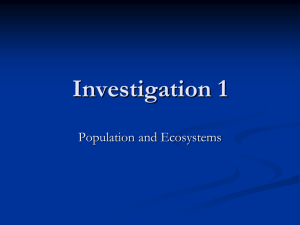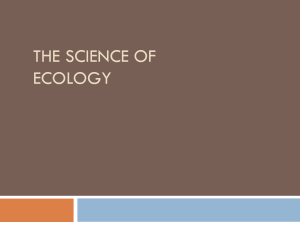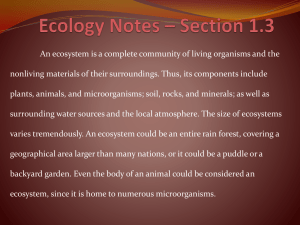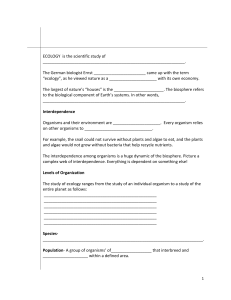AP Biology: Ecology Review Guide
advertisement
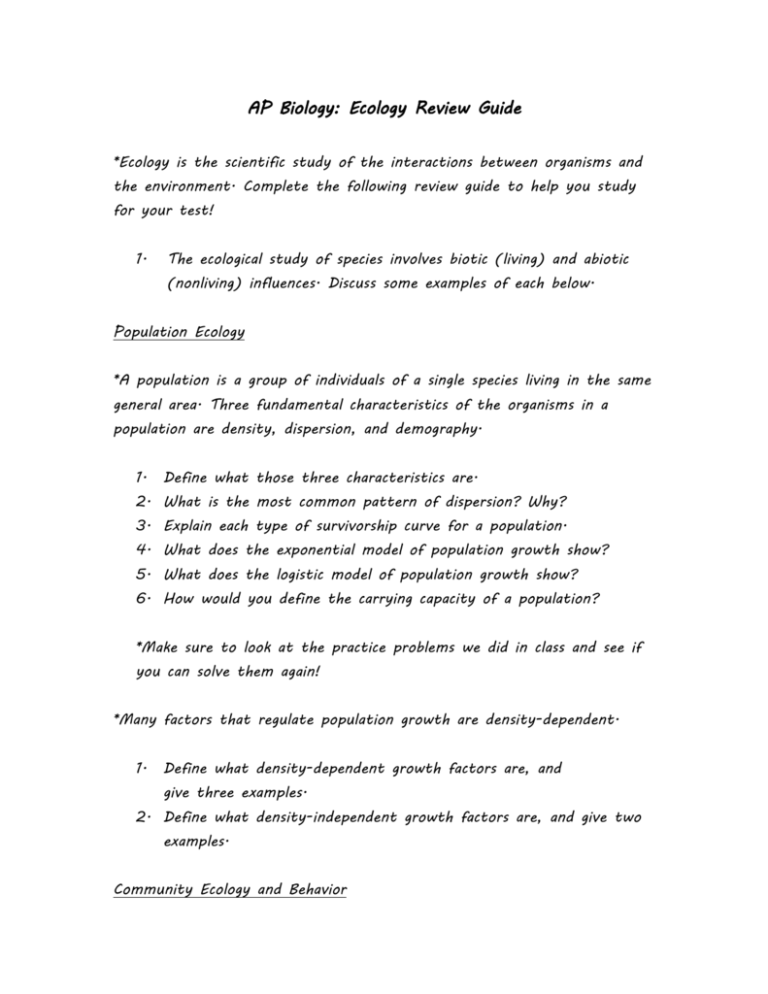
AP Biology: Ecology Review Guide *Ecology is the scientific study of the interactions between organisms and the environment. Complete the following review guide to help you study for your test! 1. The ecological study of species involves biotic (living) and abiotic (nonliving) influences. Discuss some examples of each below. Population Ecology *A population is a group of individuals of a single species living in the same general area. Three fundamental characteristics of the organisms in a population are density, dispersion, and demography. 1. Define what those three characteristics are. 2. What is the most common pattern of dispersion? Why? 3. Explain each type of survivorship curve for a population. 4. What does the exponential model of population growth show? 5. What does the logistic model of population growth show? 6. How would you define the carrying capacity of a population? *Make sure to look at the practice problems we did in class and see if you can solve them again! *Many factors that regulate population growth are density-dependent. 1. Define what density-dependent growth factors are, and give three examples. 2. Define what density-independent growth factors are, and give two examples. Community Ecology and Behavior *A community is a group of populations of different species living close enough to interact. 1. What is the difference between intraspecific and interspecific competition? 2. What does the competitive exclusion principle state? *Predation is a +/- interaction between two species in which one species eats the other. 1. What are some defenses for predators? (coloration, etc.) 2. Explain at least three symbiotic relationships between organisms. 3. How would changes in population density for prey affect the predators? Be specific. *Timing and coordination of behavior is very important in natural selection. 1. Differentiate between innate and learned behavior. *Behavior of animals is triggered by environmental cues and is vital for natural selection, reproduction and survival. 1. What are some examples of these types of behaviors displayed by animals? 2. What are some examples of cooperative behaviors between or within populations? Ecosystems *An ecosystem is the sum of all the organisms living within its boundaries (biotic community) and all the abiotic factors with which they interact. The flow of energy can be traced through the feeding or trophic levels in food chains and food webs. 1. What are the primary producers in an ecosystem? *Energy and other limiting factors control primary production in ecosystems? 1. What is meant by the term primary productivity when referring to an ecosystem? 2. Differentiate between gross primary production and net primary production. 3. How is primary production is aquatic ecosystems affected?



